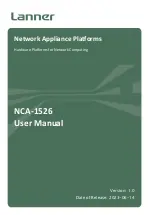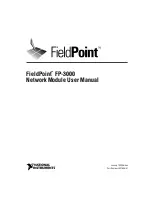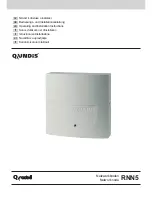
IES4005M User’s Guide
193
C
H A P T E R
2 6
VoIP
Use the Voice over IP (VoIP) commands to configure and manage the IES’s POTS service.
VoIP (Voice over IP) is the sending of voice signals over the Internet Protocol. This allows you to
make phone calls and send faxes over the Internet at a fraction of the cost of using the traditional
circuit-switched telephone network. You can also use servers to run telephone service applications
like PBX services and voice mail. Internet Telephony Service Provider (ITSP) companies provide
VoIP service.
Circuit-switched telephone networks require 64 kilobits per second (kbps) in each direction to
handle a telephone call. VoIP can use advanced voice coding techniques with compression to reduce
the required bandwidth.
VOP1164G-61 connects POTS (Plain Old Telephone System) end-user telephone subscribers to the
IP network by converting the analog voice signal into data packets and transmitting them over the
network.
H.248
The H.248 protocol, also known as MEGACO (MEdia GAteway COntrol) or the Gateway Control
Protocol, defines a VoIP network in which basic functions (such as voice coding and decoding) are
performed by one device, and higher functions (such as setting up and managing calls) are
performed by another. An H.248 VoIP network consists of one or more media gateways and a media
gateway controller.
• Media gateways (MGs) encode and decode voice data, transmitting it from one network to
another (for example, from the PSTN to an IP network, and vice versa). The POTS cards are MGs.
• Media gateway controllers (MGCs) are intelligent devices that manage the media gateways. They
set up, manage and tear down calls by providing instructions to the MGs.
Voice services are delivered over the IES POTS card telephone port to a standard telephone. An
internal analog telephone adapter (ATA) on the ONU converts the voice traffic to POTS from real-
time transport protocol (RTP) over IP.
The voice traffic and H.248 signaling from the IES are sent to the OLT or the active Gigabit Ethernet
backbone network. An external MGC or H.248 voice gateway converts the voice traffic to other
formats as required.
Summary of Contents for IES4005M
Page 4: ...Contents Overview IES4005M User s Guide 4...
Page 13: ...13 PART I Introduction and Hardware Installation...
Page 14: ...14...
Page 20: ...Chapter 2 IES Chassis IES4005M User s Guide 20...
Page 38: ...Chapter 4 Line Cards IES4005M User s Guide 38...
Page 42: ...Chapter 5 Power Supply Unit IES4005M User s Guide 42...
Page 46: ...Chapter 6 Fan Module IES4005M User s Guide 46...
Page 58: ...Chapter 7 Cables IES4005M User s Guide 58...
Page 64: ...Chapter 8 Hardware Installation IES4005M User s Guide 64 Figure 36 Removing a Line Card 1 2 3...
Page 65: ...65 PART II Commands...
Page 66: ...66...
Page 78: ...Chapter 9 The CLI IES4005M User s Guide 78...
Page 124: ...Chapter 13 Switch Features IES4005M User s Guide 124...
Page 150: ...Chapter 20 MTU IES4005M User s Guide 150...
Page 164: ...Chapter 23 Static Route IES4005M User s Guide 164...
Page 192: ...Chapter 25 VLAN IES4005M User s Guide 192...
Page 204: ...Chapter 26 VoIP IES4005M User s Guide 204...
Page 210: ...Chapter 27 IEEE 802 1x Authentication IES4005M User s Guide 210...
Page 211: ...211 PART III Troubleshooting Specifications Appendices and Index...
Page 212: ...212...
Page 220: ...Chapter 28 Hardware Troubleshooting IES4005M User s Guide 220...
















































